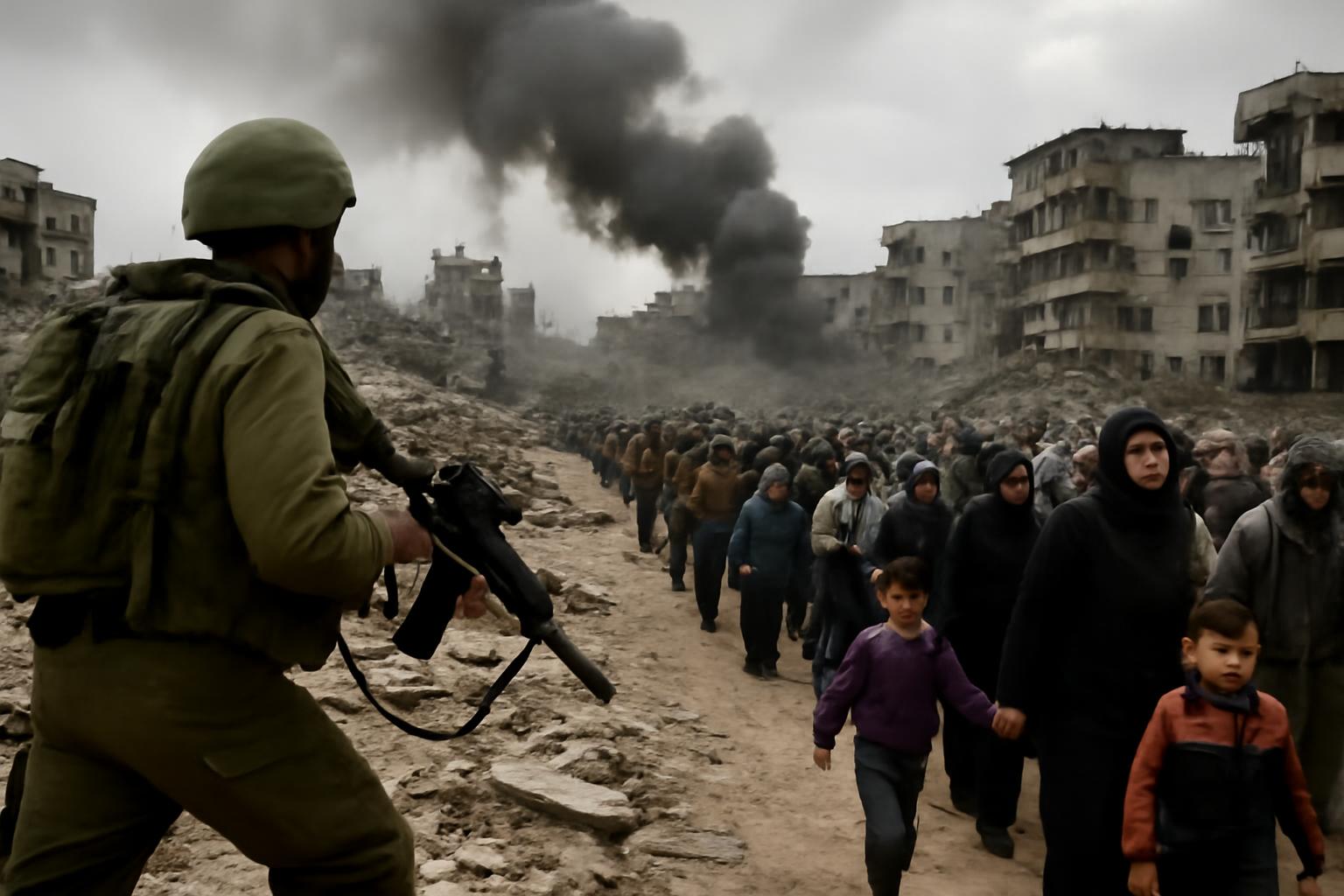Phase one of the Gaza City operation has begun, with Israel’s prime minister stating the offensive will proceed as planned while diplomacy with Hamas on hostage releases and a broader peace framework unfolds on Israel’s terms. The talks so far have not produced an agreement, though Hamas is said to have accepted a new ceasefire proposal, and a U.S. envoy floated a 60-day halt in fighting in exchange for the release of ten live hostages and Palestinian prisoners; Israel has not issued an official reply. Roughly 50 hostages remain in Gaza, with at least 20 believed to be alive. Gaza City, home to about a million people, faces rising fears that the military action will worsen a dire humanitarian crisis and trigger mass displacement southward. On August 9, Israel’s security cabinet approved the Gaza City operation and the forced relocation of civilians to the south, with aims to crush remaining Hamas strongholds, establish Israeli security control, and free the remaining captives. The international community has urged an immediate ceasefire: the UN secretary-general called for a halt to fighting, the ICRC condemned the widening attacks, and UN OCHA warned of catastrophic humanitarian consequences. By August 19, the IDF said it controlled the city’s outskirts and warned of a possible large-scale civilian exodus, while authorities proposed southern shelter options for the displaced and aid workers cautioned about a malnourished population.
If one looks beyond the immediate tactical headlines, one sees the stubborn echo of a principle that knowledge—and even decency—slip through the fingers of those who wield power only by decree. War, in such a compact and crowded setting, is the most conspicuous test of whether a political order can reconcile human beings with the limits of what force can accomplish. The decision to relocate civilians and to press an offensive under a banner of security presumes a central planner’s clarity about a future that is, in truth, a chorus of local rifts, loyalties, and contingencies no single seat of power can know. This is the knowledge problem in its starkest form: the more ambitious the ambition to shape a landscape by force, the more the unintended consequences multiply, until the very ends—protection, safety, peace—are undermined by the means chosen to achieve them.
There is something morally intolerable about the sight of a million people being steered like a caravan toward the south, with the burden of consent placed on those who have the least power to refuse. The logic of coercive relocation—told as a necessity to crush an enemy and protect captives—risks turning civilians into collateral damage in the service of a larger narrative of victory. When the objective is to crush a faction and to secure a future that only a state can claim to foresee, one should pause and recall that the most reliable, lasting safeguards of liberty arrive not from the blunt instruments of force but from institutions that channel human action through the rule of law, predictable procedures, and voluntary cooperation.
The current frame also reveals a fundamental tension between security aims and the conditions for peaceful coexistence. The language of hostage releases, ceasefires drafted in backrooms and hallways, and battlefield control can give the impression that a durable settlement is within reach if only the correct timetable is followed. Yet a durable settlement cannot be manufactured by forceful pacing nor by the illusion that coercion can be calibrated to produce predictable moral outcomes. The real engine of social order—peaceful coexistence, economic exchange, and mutual restraint—emerges most reliably when people are free to pursue their own means within a framework of stable, universally applicable rules and when relief and aid flow through voluntary channels rather than through controlled corridors of power.
This is a moment for the genuine, hard-nosed arithmetic of liberty: protect civilians, respect rights, and expand genuine humanitarian relief rather than enshrining displacement as a policy instrument. Let aid be distributed through open, voluntary channels; allow international humanitarian organizations and local communities to operate with neutral access; and insist on clear, enforceable protections for the displaced, grounded in law rather than the prerogative of a belligerent commander. A ceasefire, achieved not by domination but by mutual constraint and reliable humanitarian corridors, offers a chance for the kind of quiet order in which private initiative, charitable assistance, and local institutions can work to restore dignity and a sense of normalcy.
If we truly mean to defend the precious idea of liberty amid such upheaval, we must resist the comforting temptation to convert every conflict into a technocratic project of control. The test of statesmanship is not the capacity to inflict maximum coercion for a declared end, but the restraint to sustain human agency within a framework that makes peaceful order possible. The only sustainable peace will be one that emerges from channels where people can live and work, exchange and assist one another, under rules that apply equally to all and are enforced by a system of law rather than by the overwhelming force of arms. The window now is to choose relief over rhetoric, to choose restraint over escalation, and to anchor the response in the spontaneous order of civil society and the benefits of voluntary cooperation—the very mechanisms by which free people have always found ways to endure, rebuild, and ultimately reconcile.
